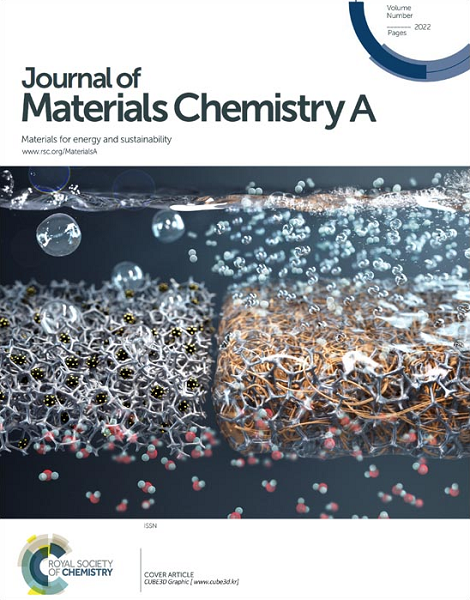Assembling Graphene Quantum Dots on Aminophenol-formaldehyde Resin towards Efficient Artificial Photocatalytic Hydrogen Peroxide Synthesis
IF 10.7
2区 材料科学
Q1 CHEMISTRY, PHYSICAL
引用次数: 0
Abstract
Artificial photocatalytic hydrogen peroxide (H2O2) production via metal-free catalysts has attracted increasing attention as an alternative strategy to inorganic photocatalysts because of their affordabilities, high stabilities, and safety. While the relatively low photocatalytic efficiency of these catalysts limits their practical application. In this work, graphene quantum dots (GQDs) were successfully loaded on aminophenol-formaldehyde polymer (APF-GQDs) through a straightforward modification method, which can catalyze the water oxidation reactions and oxygen reduction reactions for H2O2 generation. With the help of GQDs, APF-GQDs show a stronger light absorption capacity, narrower bandgap for exciton dissociation, and higher separation and transfer efficiency of photogenerated electrons than that of the pristine APF, which contributes to an excellent H2O2 synthesis (Apparent Quantum Efficiency, 12.9% at 420 nm and Solar-to-Chemical Conversion Efficiency, 1.14%). Our photocatalytic system remains a high activity (2361.8~2826.0 μmol·g-1) for solar-driven H2O2 in both pure O2 and air conditions even under harsh water environments (tap water, lake water, and seawater). Thus our study offers a new pathway for designing innovative catalysts for green chemical synthesis and environmental remediation.求助全文
约1分钟内获得全文
求助全文
来源期刊

Journal of Materials Chemistry A
CHEMISTRY, PHYSICAL-ENERGY & FUELS
CiteScore
19.50
自引率
5.00%
发文量
1892
审稿时长
1.5 months
期刊介绍:
The Journal of Materials Chemistry A, B & C covers a wide range of high-quality studies in the field of materials chemistry, with each section focusing on specific applications of the materials studied. Journal of Materials Chemistry A emphasizes applications in energy and sustainability, including topics such as artificial photosynthesis, batteries, and fuel cells. Journal of Materials Chemistry B focuses on applications in biology and medicine, while Journal of Materials Chemistry C covers applications in optical, magnetic, and electronic devices. Example topic areas within the scope of Journal of Materials Chemistry A include catalysis, green/sustainable materials, sensors, and water treatment, among others.
 求助内容:
求助内容: 应助结果提醒方式:
应助结果提醒方式:


